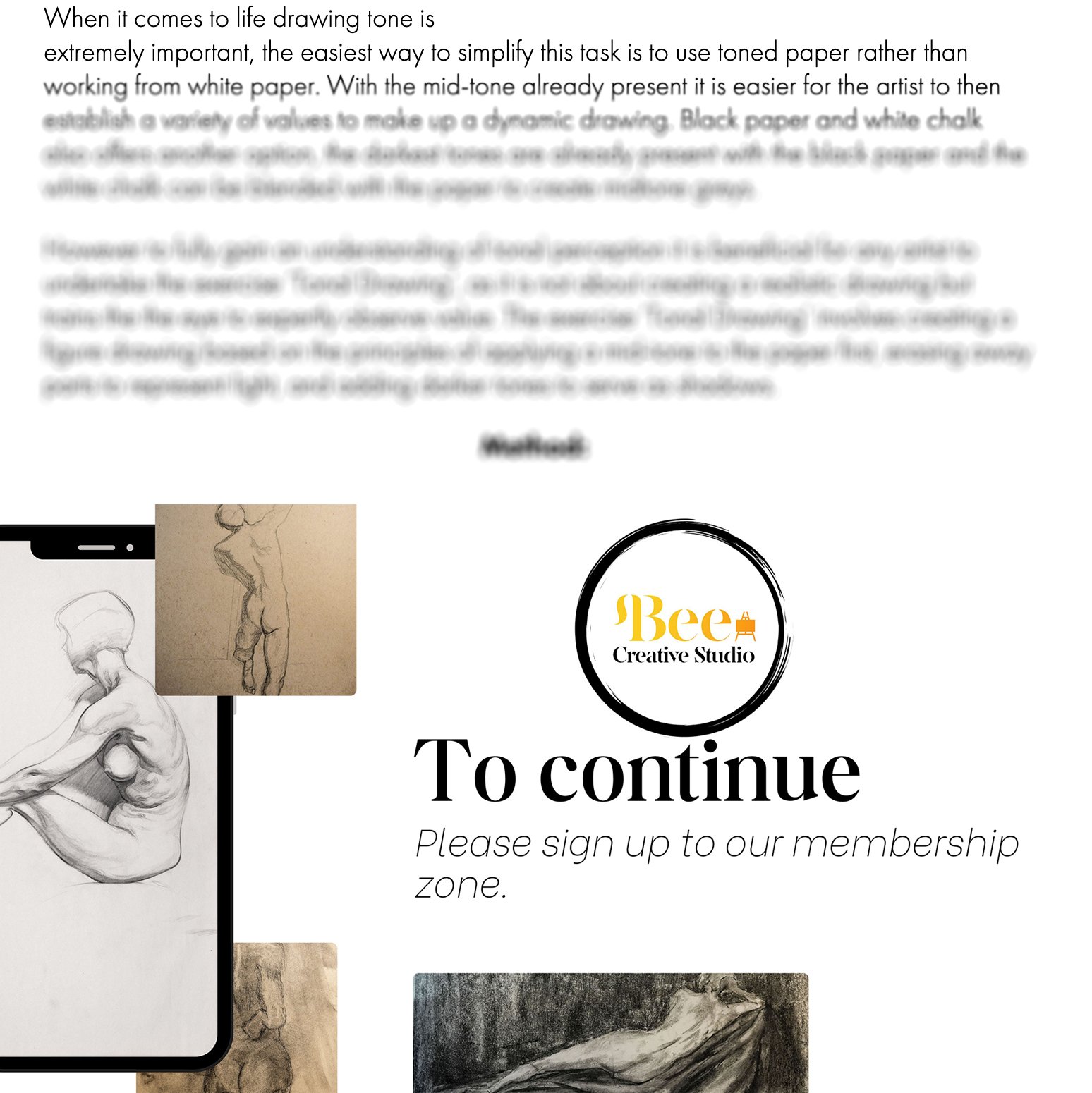When we started Bee Creative Studio in December, we hoped our vision of high quality life drawing classes would we successful. As a team we invest much of our time and energy in to providing what we hope is the best service possible. Although we are now half-way through March, if we look back to February we can confidently say our hard work is paying off. Every week have new and returning artists coming to our classes, with many choosing to branch out from pencils in to other media and materials, such as watercolours and charcoal.
However, if you are new to figure drawing, and thinking of trying out our life drawing classes for the first time, you may be feeling overwhelmed by the wealth of drawing materials to choose from. In this case it helps to know the difference between the various medias. There are three main materials predominately used in life drawing; pencil, graphite and charcoal.
Pencil
Pencils offer a wide range of tones across the HB grading system, it is for this reason pencils are generally considered the simplest tools, and are typically good for those new to drawing. However pencils offer only light smudging, meaning you won’t be able to eliminate your original lines in this way, and they may even feel quite unforgiving unless you use an eraser. Similarly, you can also find woodless graphite pencils or graphite sticks in a range of tonal value. Chucky graphite sticks allow for larger strokes, that feel more free-flowing and expressive than the precise nature of a pencil. For some, graphite can bridge the gap between the control of a pencil and the ability to blend and build colour in a similar way to carbon. Although graphite won’t give an intense black, it will give some sheen to your drawings which you may find can add to the realism.
Charcoal
For some the idea of using charcoal can be un-nerving, its loose powdery composition and intense black colour can be off pointing to those new to life drawing. However charcoal is not one-dimensional, and is in fact a wonderful, playful medium to use for drawing the nude figure. Compressed charcoal is made from powdered charcoal, and gives a very deep black. Its powdery texture means it can be smudge very easily by gently rubbing it with your fingers, the side of your hand and a tortillion/blending stump. In this way it is perfect for creating soft marks of varying shades of grey and for creating bold black lines.
Being a life model:
Every week we aim to bring a different model into the studio, as everyone’s body is individual it create new challenge for our artists to draw. However we are always being asked what we look for in a life model. So if you are thinking of giving this a go here are some of the things we think are significant to becoming an excellent life model:
Be prepared for the different ways in which each life drawing class works, there is no ‘right way’ some classes are very structured with the principle artist not only asking you to pose in a certain way but they may also ‘rearrange’ you. So be prepared to be touched. However, some classes are unstructured, and they will expect you to come up with your own poses to fit in with the given time limits. In this case you will have to think on your feet and be inventive with your poses.
Have a good attitude, this goes without saying really. If you turn up in a bad mood or act in a way that leaves the principle artist or customers feeling uncomfortable you will not be asked to work again. Your attitude matters not only on the day but from the initial contact too.
Arrive early, punctuality is extremely important for life modelling. You will be asked to arrive early (10-15 minutes) before the class begins, this will allow us to check the poses with you for the upcoming session, check the lighting and props, as well as give you time to change. Being a life model is like any other job you are required to be there on the time stated and to make us aware if problems arise and you are running late.
Be confident, although you are not going to be participating in a naked catwalk, you will be nude in front on a group of strangers. However there is no perfect body, and life drawing is not about drawing perfectly defined nude figures. On the contrary life drawing is about people from all walks of life, all ages, and all abilities. When the artists are drawing they are looking for your unique features such as the lines on your face, the curvature of your spine, the scars or tattoos.

All in all being a figure model for a life drawing class is a wonderful thing, not only are you enabling artists to understand the anatomy of the human figure, you are contributing to someone else’s art.
I really appreciate you reading my words, there's no charge, but if you want to offer a little support, click on the button below to buy me a coffee or two!
Nichola
















